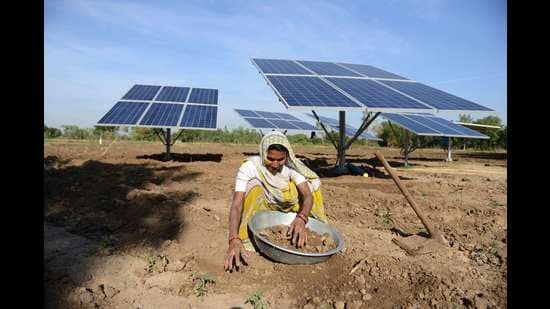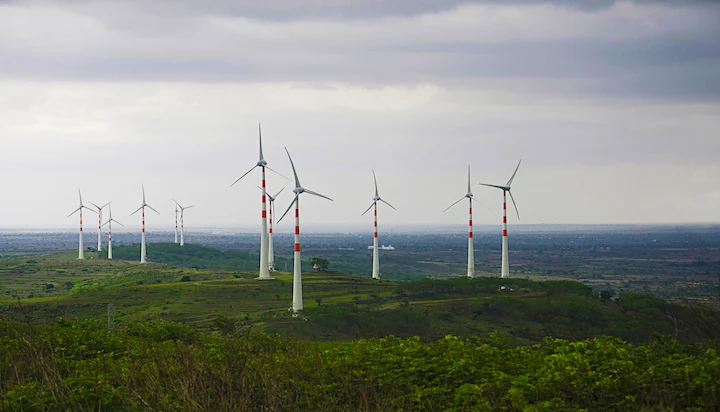In recent weeks, zero-carbon (“green”) hydrogen has moved from the margins of India’s energy infrastructure planning to centre stage. Prime Minister (PM) Narendra Modi’s Independence Day speech included the announcement of a National Green Hydrogen Mission aimed at kickstarting development and deployment of the emerging technology, while the International Climate Summit in New Delhi took up as its theme “Powering India’s Hydrogen Ecosystem.” PM Modi’s recent meetings in Washington also focused on green hydrogen as a key tool in India’s arsenal to combat the climate crisis.
Investing in green hydrogen is prudent — its energy density and ease of storage could allow it to cut emissions in sectors where existing approaches to clean electricity will likely prove inadequate, such as long distance transportation or steel manufacturing. Yet, trumpeting the potential of hydrogen might also distract from more pressing priorities for clean energy.
Hydrogen will only ever be cost-effective in slashing emissions in a handful of sectors; instead, a combination of electrification and renewable energy will account for the lion’s share of India’s carbon reductions. More to the point, green hydrogen’s commercial viability relies on renewable energy used to manufacture it being available at a low price. Without an abundant supply of wind and solar power, green hydrogen will never get off the ground.
Unfortunately, while India has added wind and solar capacity at a rapid pace in recent years, that growth shows signs of slowing. The government is almost certain to fall short of its goal of 175 gigawatts of renewable energy capacity by 2022, and its goal of 450 gigawatts by 2030 is projected to meet the same fate. One of the principal reasons for this impending slowdown is India’s broken electricity distribution companies (discoms).
Transitioning to a renewables-intensive energy paradigm is a formidable challenge, requiring utilities to (among other things) cope with greater variability of electricity supply than they are used to from traditional fossil fuel generation. Adaptation requires not only new investments in battery storage and transmission capacity, but also more fundamental changes in how discoms operate, such as a shift to coordinating energy dispatch over larger geographic areas.
These changes should be feasible and even cost-effective. At the moment, however, India’s power sector isn’t up to the task. A long history of manipulation by politicians for the sake of short-term electoral objectives has left discoms bankrupt and institutionally weak. Chronic financial shortfalls prevent them from making forward-looking investments in the infrastructure necessary to support higher levels of renewable energy. Their limited independence from political interests, meanwhile, makes it difficult to enact more structural changes to grid management — including the Central Electricity Regulatory Commission’s recent proposal for a market-based system of energy dispatch, which would give a vital fillip to India’s renewable energy build-out, if implemented.
Starved of funds, risk-averse, and largely insulated from voter demands for change, most discoms will continue to take the path of least resistance, dragging their heels on the path to a high-renewables future. Fixing these maladies is no easy task. Past efforts at reform — such as the 2015 Ujwal DISCOM Assurance Yojana (UDAY) scheme — have done little to address the power sector’s core political problems, instead focusing on technical, bureaucratic reforms such as establishing new regulatory agencies or restructuring utilities’ debts.
As a result, they have had limited impact. Discoms remain operationally inept, financially insolvent, and vulnerable to political interference. The government’s ₹300,000-crore discom reform scheme proposed earlier this year, while an improvement in some respects, ultimately follows the same broken strategy.
Serious action on clean energy must instead begin by recognising that additional policy demands and financial bailouts from the Centre won’t move the needle unless coupled with a concerted attempt at mobilising voters and deploying political capital to break state-level cycles of dysfunction. In other words, power sector reform must be seen as a political problem rather than a technical one. Fortunately, in this respect, Modi enjoys a unique window of opportunity.
His popularity with voters can lend credibility to reforms that have long been viewed as politically unpalatable. And his dominance within the Bharatiya Janata Party allows him to pressure governments led by his party to back up reform packages with the political resolve to implement them. In this way, Modi could coordinate a “coalition of the willing” in which BJP-ruled states join hands with solar- and wind-intensive states such as Tamil Nadu, which have the most to gain from a renewable energy-friendly distribution policy, and commit to a reform package with teeth.
A critical mass of states acting in concert could create a virtuous circle in which investors would vote with their feet and voters would see the benefits of a more robust energy sector, encouraging them to exert pressure on their own representatives to enact similar policies. These regional efforts could then gradually expand and deepen, setting the stage for truly national reform.
Such an incremental, state-based strategy may lack the “big bang” appeal of a national initiative like the Green Hydrogen Mission. However, it is this more comprehensive approach that holds the promise of meeting India’s clean energy ambitions.
By contrast, if the government continues to defer reform on the fundamental problems crippling the power sector, the growth of India’s renewable energy will falter, and the promise of a decarbonised economy will remain a pipe dream.
Source: hindustantimes.com









